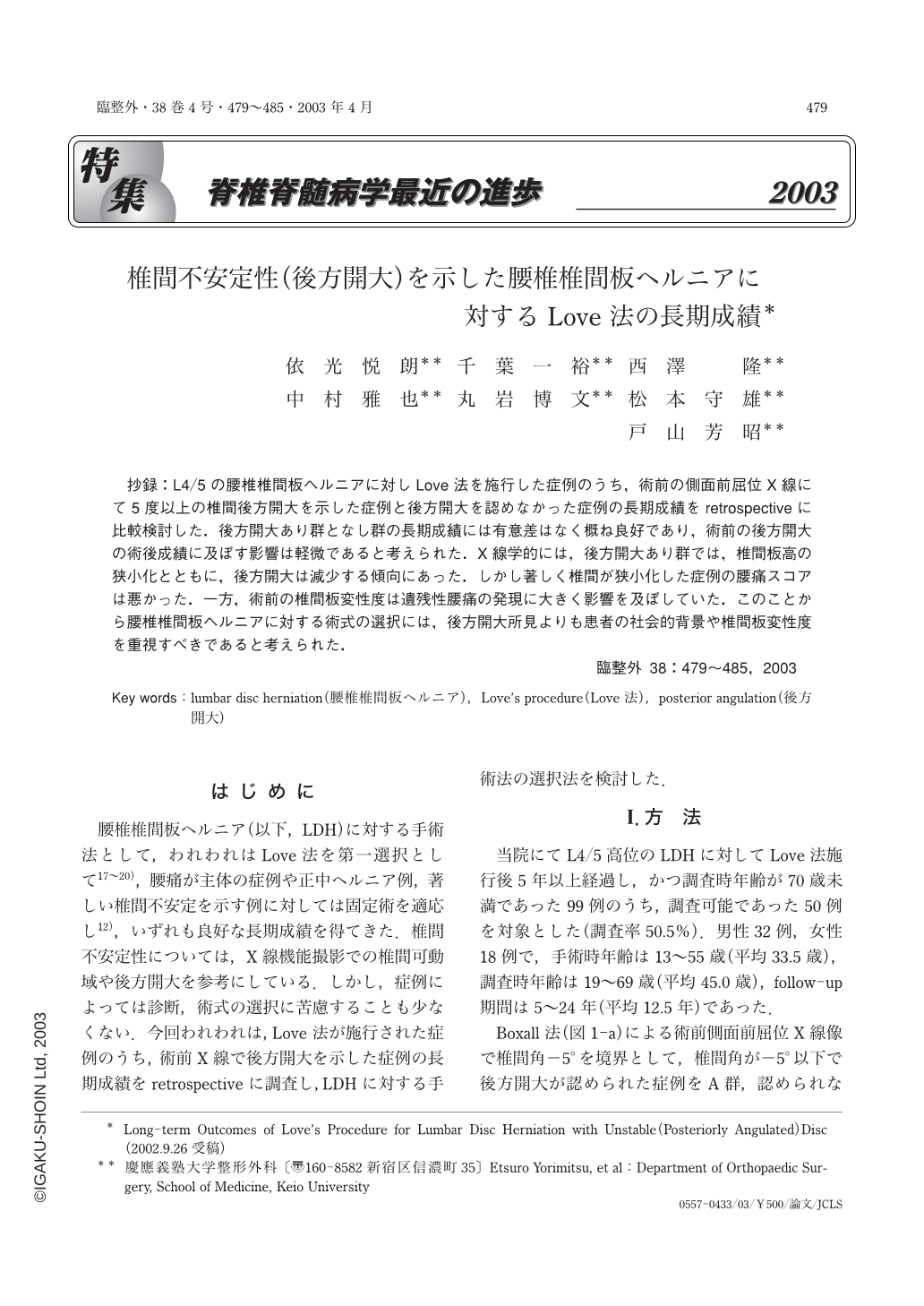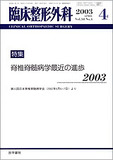Japanese
English
- 有料閲覧
- Abstract 文献概要
- 1ページ目 Look Inside
抄録:L4/5の腰椎椎間板ヘルニアに対しLove法を施行した症例のうち,術前の側面前屈位X線にて5度以上の椎間後方開大を示した症例と後方開大を認めなかった症例の長期成績をretrospectiveに比較検討した.後方開大あり群となし群の長期成績には有意差はなく概ね良好であり,術前の後方開大の術後成績に及ぼす影響は軽微であると考えられた.X線学的には,後方開大あり群では,椎間板高の狭小化とともに,後方開大は減少する傾向にあった.しかし著しく椎間が狭小化した症例の腰痛スコアは悪かった.一方,術前の椎間板変性度は遺残性腰痛の発現に大きく影響を及ぼしていた.このことから腰椎椎間板ヘルニアに対する術式の選択には,後方開大所見よりも患者の社会的背景や椎間板変性度を重視すべきであると考えられた.
Introduction:Standard discectomy (SD) for lumbar disc herniation (LDH) is still the preferred procedure of the majority of surgeons. In this study, the long-term outcome of SD for LDH in patients with unstable discs was compared retrospectively with the outcome in patients with stable discs.
Methods:Fifty patients who underwent SD for LDH at L4/5 and were followed for at least 5 years were divided into two groups, a group of 17 patients with posterior angulation of more than 5 degrees on preoperative lateral flexion radiographs measured by the Boxall method (Group A) and a group of 33 patients with posterior angulation of less than 5 degrees (Group B). Clinical outcome was assessed on the basis of JOA scores and the Oswestry Disability Index (ODI). Disc height ratio and sequential changes in disc angulation were examined. The patients were also divided into 3groups according to the degree of disc degeneration, i.e., mild, moderate, or severe, based on the preoperative discography or MRI findings, and degree of disc degeneration, disc angulation, and the intensity of low back pain (LBP) at the final follow-up were investigated for correlations.
Results:There were no significant differences in JOA scores or ODI between Group A and Group B at the final follow-up. The posterior angulation of the discs tended to decrease after surgery together with the progression of disc height narrowing. The average LBP score of the patients with mild disc degeneration was significantly higher than in those with severe disc degeneration. On the other hand, there were no significant differences in LBP scores between Group A and Group B accordingto the difference in degree of disc degeneration.
Conclusion:The long-term outcome of SD for patients with posterior angulation were as favorable as for those without such angulation. The degree of disc degeneration significantly impacted the incidence and intensity of residual LBP. The presence of posterior angulation alone, therefore, may not be an indication for interbody fusion for LDH. The degree of disc degeneration and social background factors should also be considered.

Copyright © 2003, Igaku-Shoin Ltd. All rights reserved.


